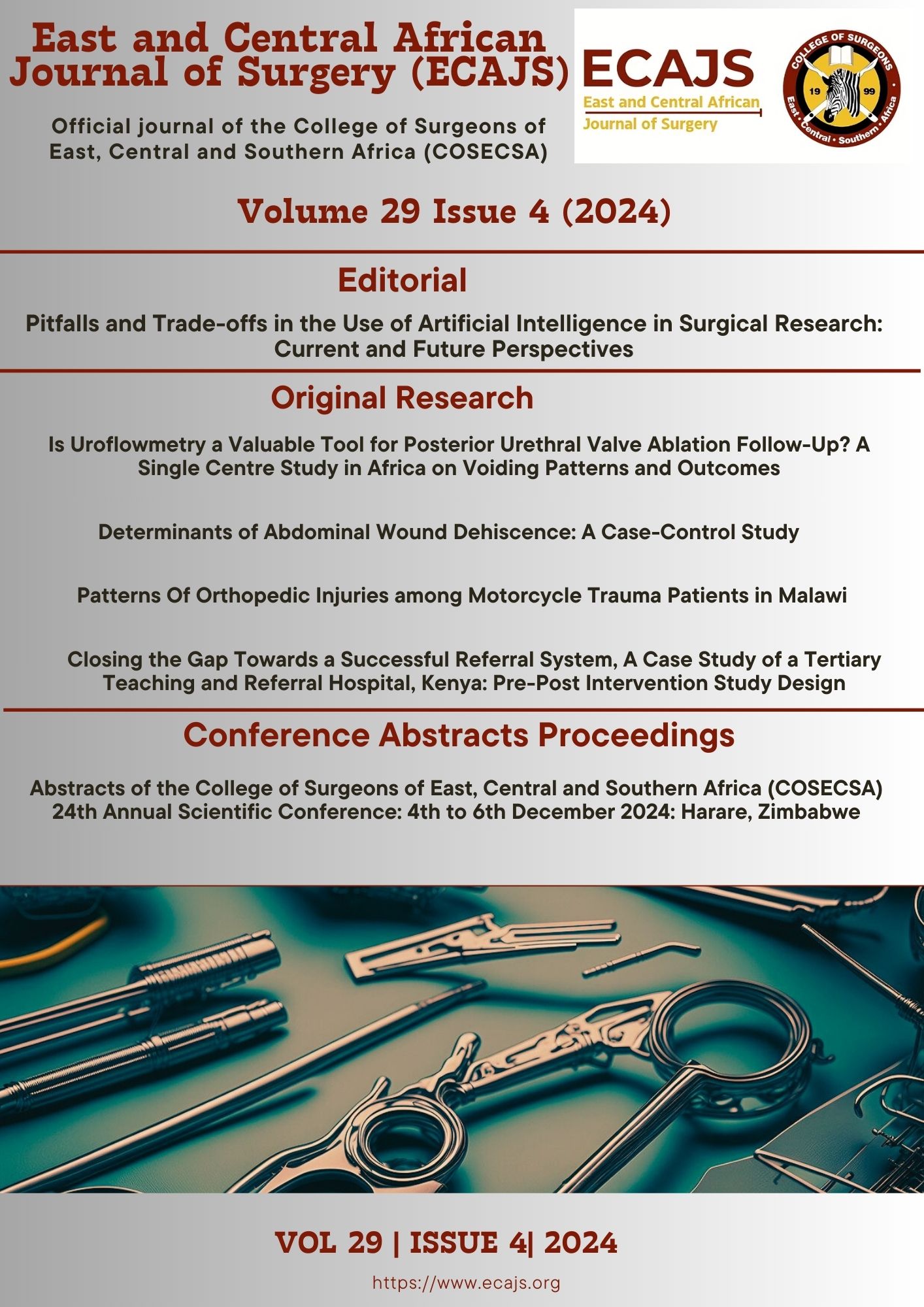Main Article Content
Patterns Of Orthopedic Injuries among Motorcycle Trauma Patients in Malawi
Abstract
Background
Worldwide, road traffic accidents are on the rise. Motorcycle users are highly vulnerable to accidents, resulting in rising orthopedic related morbidity and mortality. In Malawi, the surge in motorbike taxi services has led to a notable increase in motorbike-related road accidents.
Objectives
This study aimed to assess the pattern of orthopedic injuries, examine demographic characteristics, and analyze the mechanisms of injuries among motorcycle trauma patients admitted at Queen Elizabeth Central Hospital.
Methods
A retrospective study was conducted at Queen Elizabeth Central Hospital in Malawi. We included all orthopedic surgery data from ward admissions records from January to December 2021. Data were extracted from patients’ files and stored on REDCap and analyzed using SPSS version 27.
Results
A total of 502 motorbike and non-motorbike road traffic trauma patients were recorded in the inpatient orthopedic trauma database. Of these, 453 patients’ files were identified and analyzed, while 9.7% (49/502) files were missing. Amongst the 453 patients’ files identified, those that suffered motorcycle injuries were 63.4% (287/453) of all road traffic accidents. Most of these accidents occurred in urban areas 64.1% (168/266). The age range was 8 to 78 years with most falling within age group of between 21 and 40, 53.7% (154/287). The majority, 78.7% (226/287), were male. Collisions between motorcycles and cars were the most common mechanism of injury 41.6% (119/286). Motorcycle drivers constituted the largest group of victims 42.8% (118/276) and majority of victims did not use helmets 83.1% (74/89). The most frequent orthopedic injury pattern was fractures of the tibia and fibula accounting for 44.6% (128/287) of injured patients, with highest likelihood of being open 57.8% (59/102). Greater number of orthopedic injuries, 70.1% (199/284), were treated surgically. The commonest duration of hospital stay was ranging from 1 week to 1 month with most being discharged within 14 days, 43.9% (125/285).
Conclusion
Motorcycle related accidents is public health challenge in Malawi and similar LMICs, leading to a high burden of morbidity and mortality, primarily affecting the productive age group with long impact on health system to spend long time in hospital, requiring surgical provision. Policymakers should consider preventive measures, as the treatment of these injuries strains already limited hospital resources and contributes to poor patient outcomes.







